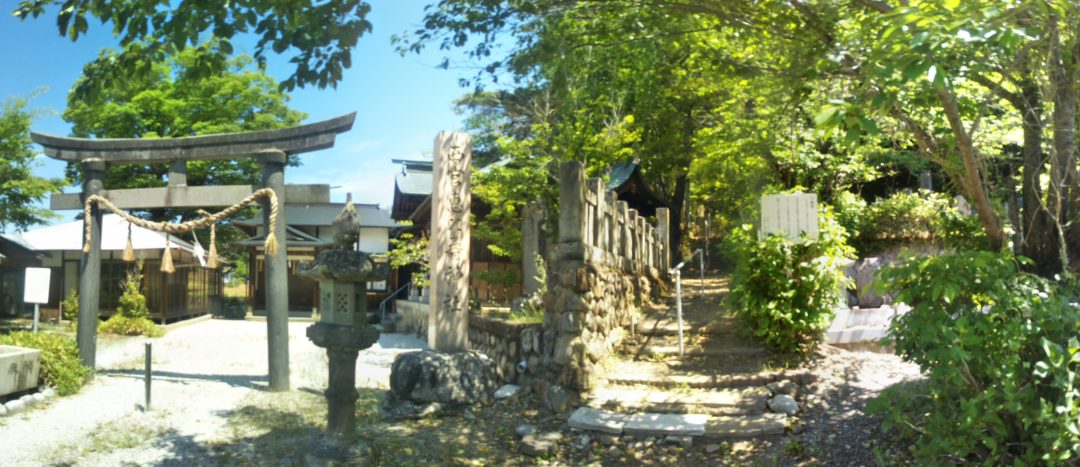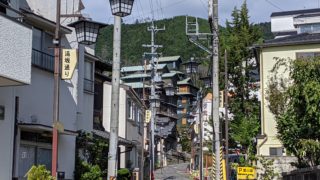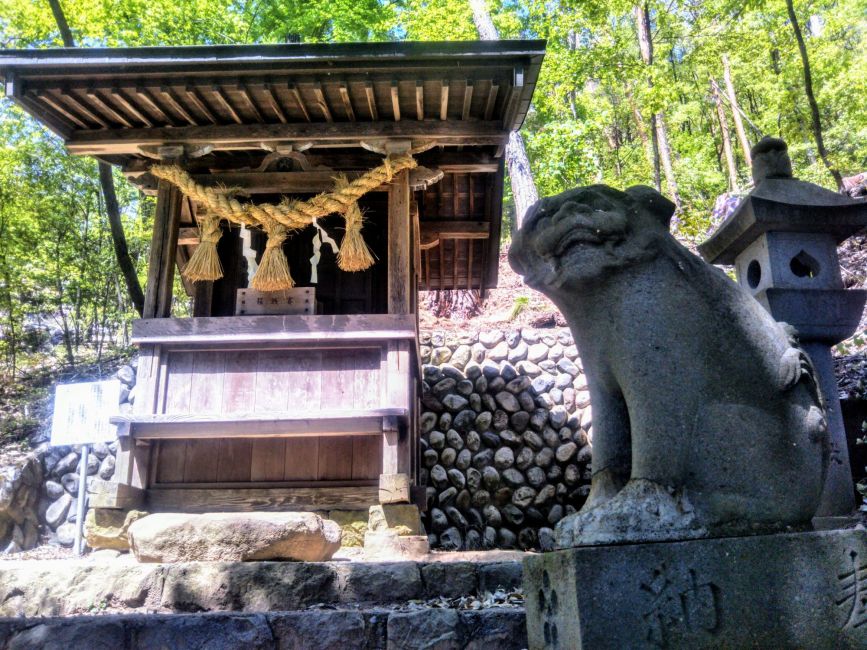Handmade Soba, Simple Hiking & Hot Springs, All in Asama Onsen

The hot spring village of Asama sits quietly in northern Matsumoto. It’s an easy twenty-minute bus ride from the station, or just a bit longer by bike. Once you’re there you’ll find a compact pocket of regional history hemmed in by modest mountains and packed with handmade soba, simple hiking and storybook hot springs. From a distance it’s easy to miss. Up close you’ll discover a lot.
Hot Springs
The onsen village of Asama is said to have been established in the earliest stages of Japan’s history as a nation. Known originally as Tsukama-no-Yu, the hot springs here attracted nobility and samurai from the Kamakura Era right down through the long-lasting rule of the Tokugawa shogunate. All told, the people of Japan have been enjoying these waters for upwards of 1,500 years.

Hotel Tamanoyu
Perhaps the most notable of Asama’s many onsen is Biwa-no-Yu, founded in the latter part of the 17th Century. Ishikawa Kazumasa, who at the time ruled this Shinshu region from Matsumoto Castle, built a retreat here called the Yu-Goten. Ishikawa Akimitsu, grandson of Kazumasa, was injured in battle in (it is said) 1584 and came here to rest and heal. To avoid detection by enemy forces he changed his name to Oguchi. Four hundred years later the Oguchi family is still here, taking care of the waters that took care of their illustrious ancestors. And for about the price of a bowl of ramen you can avail yourself of these waters in Biwa-no-Yu’s beautiful traditional setting.

Biwa-no-Yu Onsen
While Biwa-no-Yu is hard to beat for its history, Asama’s most accessible onsen is Hot Plaza, located right across the street from the aptly-named Asama Onsen bus stop. Hot Plaza offers both indoor and outdoor baths as well as a sauna and a lounge to relax and cool off after your soak. If you’re content to simply dip your toes, there’s a free-to-use ‘ashiyu’ foot bath right out front.

Hot Plaza Onsen
Hiking
While some folks come to Matsumoto to tackle the peaks of the Northern Alps west of town, others are content to take it easy and view those 3,000-meter mountains from this side of the Shinshu plains. If this is your style, Asama offers some excellent short hikes.

There are a few different trails to choose from, each with its own character and stories. My picks are the criss-crossing paths up Daionji-yama and Goten-yama, where you’ll find the best views of those distant northern Alps, with some traces of Asama’s long history along the way.
Soba
When Japanese people hear the word Shinshu they will often (and often with watering mouths) think of homemade “te-uchi” soba. Indeed, soba has a long tradition here in Shinshu – soba noodles are actually said to have been born in this region – and is a special dish you should not miss.

Soba Buckwheat Noodles
Not surprisingly, there are plenty of places around Asama to grab a plate of soba, as well as plenty of other local favorites. Here, you can even learn this traditional Japanese culinary art from a local Soba master. This Soba-making workshop is the perfect opportunity to get more than just the literal bite of this tradition.

Place Yourself in the Shoes of a Japanese Soba Master
Relaxing, Rewarding Asama
A trip up the Metoba River to the onsen village of Asama takes just a bit of time and effort. But you’ll be amply rewarded with your pick of handmade soba, simple hiking, and excellent hot springs, all of it imbued with the history of Matsumoto and this area called Shinshu.

Author Profile

Latest entries
 Events2024-07-19Bon Bon Girls & Aoyama-Sama Boys: A Centuries-Old Matsumoto Tradition
Events2024-07-19Bon Bon Girls & Aoyama-Sama Boys: A Centuries-Old Matsumoto Tradition Sightseeing2023-12-18Handmade Soba, Simple Hiking & Hot Springs, All in Asama Onsen
Sightseeing2023-12-18Handmade Soba, Simple Hiking & Hot Springs, All in Asama Onsen Seasonal Topics2023-12-04Winter Wonderland: 5 Ways to Put Your Feet in the Matsumoto Snow
Seasonal Topics2023-12-04Winter Wonderland: 5 Ways to Put Your Feet in the Matsumoto Snow Other2023-07-14Shinshu Matsumoto Airport: Gateway to the Center of Japan
Other2023-07-14Shinshu Matsumoto Airport: Gateway to the Center of Japan












